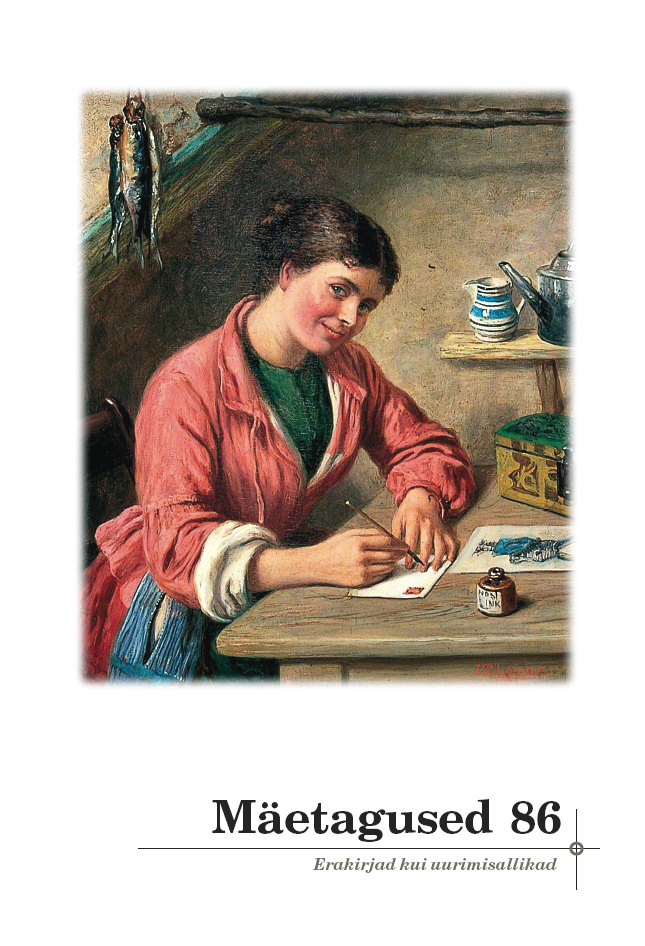“Mis on möödas ega see ei kordu…” Kurt Eiskopi kirjad Edith Eiskopile aastaist 1940–1941 kui ajalootunnistaja tunnistus
“Something that has passed cannot repeat itself...” Kurt Eiskop’s letters to Edith Eiskop in 1940–1941 as the testimony of historical witness
Author(s): Maarja HolloSubject(s): Customs / Folklore, Cultural Anthropology / Ethnology, Culture and social structure
Published by: Eesti Kirjandusmuuseum
Keywords: Estonian Republic; love letters; military service; Red Army; testimony; USSR; World War II;
Summary/Abstract: This article examines the letters of a young Estonian man, Kurt Eiskop (1919–1944), to his beloved and future wife, Edith Eiskop (1919–1991). Kurt Eiskop’s 55 letters were handed over to the Estonian Cultural History Archives in 2022, as a result of the collection campaign “Letters in my life”, a competition organised cooperatively by the Estonian Life Stories Association and the archives. Most of the letters were written between 16 April 1940 and 29 June 1941, while Eiskop was doing his military service in the army of the Estonian Republic. In this article I consider his letters as a testimony of a historical witness, based on what he saw and experienced during the arrival of the Red Army forces in the Estonian Republic in June 1940 and its subsequent annexation. What interests me in Eiskop’s letters as testimony is, first and foremost, the author’s subjective experience, which can be seen in the way emotions are expressed in his letters. As is characteristic of love letters, the main topic of Eiskop’s letters is emotions – longing for the beloved and nostalgia for life before the army. In retrospect, the latter seems like a paradisaical idyll to him, while the present reality seems like being in prison. In addition to the expression of emotions, the subjective experience of the writer emerges in the letters through descriptions of everyday life in the army, which also contain the author’s thoughts, moods, and attitudes toward the new regime. It emerges from Eiskop’s letters that service in the army of the Estonian Republic was disagreeable to him, as it separated him from his beloved and impeded their beginning a life together. The arrival of reinforcements of the Red Army in the Estonian Republic in June 1940 put the Estonian Army and those performing their military service there in a complicated situation: they had to get used to alienating new circumstances and rules; likewise there were fears that the war would spread to the Estonian territory and that soldiers would be sent to fight the war for the Soviet Union. In a politically complicated time, which also entailed complications for personal life, writing letters provided support and a way of sustaining relationship despite being apart. The letters Eiskop wrote to his beloved during his military service became a kind of refuge for him, a safe world, the creation of which was enabled by nostalgic memories. These are poeticised and idealised images of the past which provide comfort and strength, while intensifying his closeness to the addressee. It is interesting that in Eiskop’s letters nostalgia is not always unidirectionally aimed at the past, but some memories are bound to the author’s hopes and plans for the future. However, nostalgia is not the only emotion that Eiskop expresses in his moments of solitude. Eiskop’s letters are also filled with longing for the beloved, expressed by the author in bursts of emotion, sometimes more controlled, sometimes more expressive, in some letters also as desperation.
Journal: Mäetagused. Hüperajakiri
- Issue Year: 2023
- Issue No: 86
- Page Range: 53-72
- Page Count: 20
- Language: Estonian

